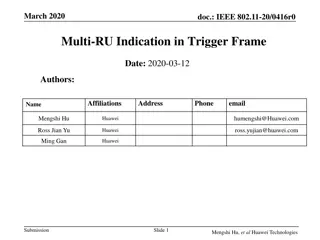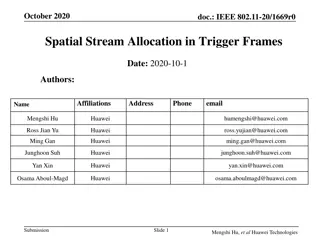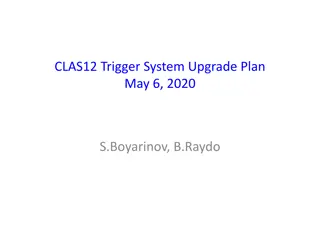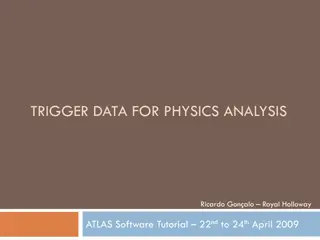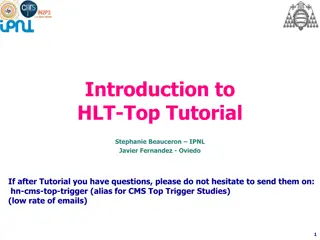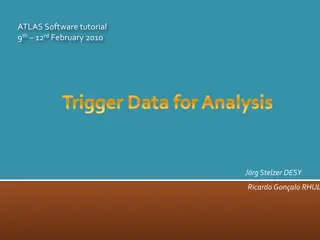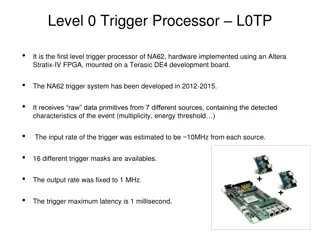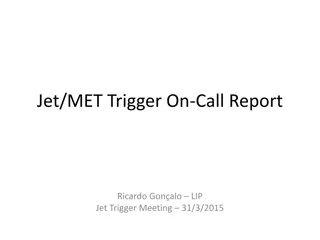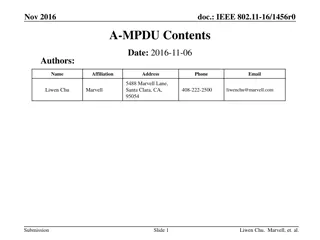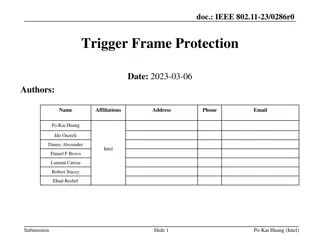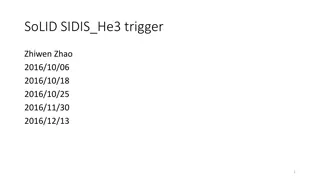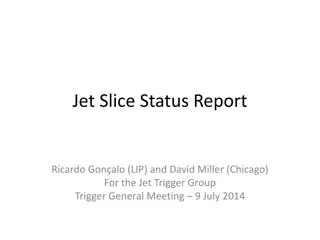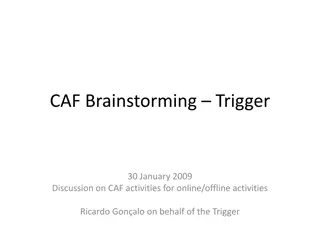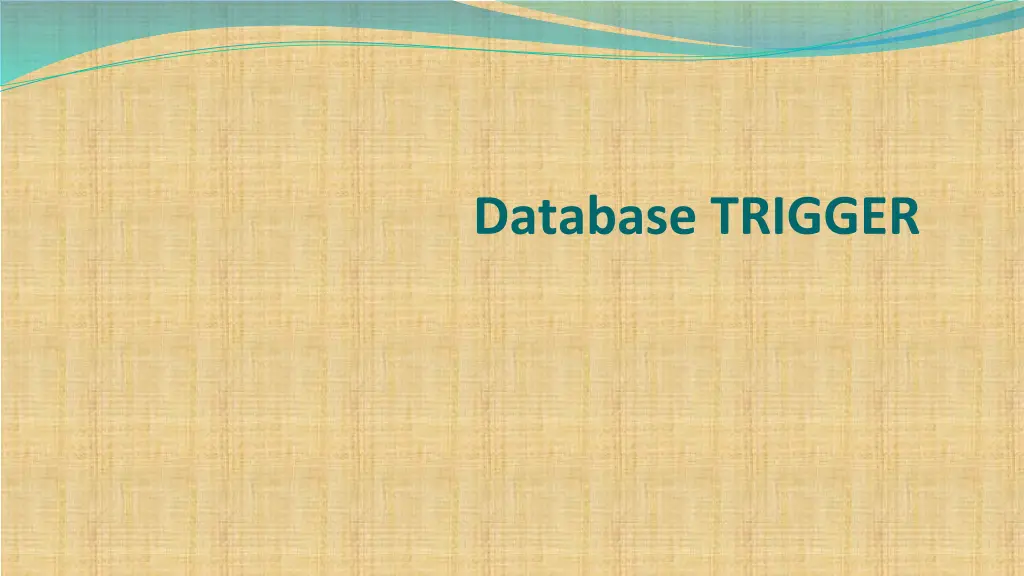
Understanding Database Triggers
Learn about database triggers, their syntax, usage, and examples. Explore how triggers are used to automate actions in a database based on specific events, providing insights into creating and managing triggers effectively.
Download Presentation

Please find below an Image/Link to download the presentation.
The content on the website is provided AS IS for your information and personal use only. It may not be sold, licensed, or shared on other websites without obtaining consent from the author. If you encounter any issues during the download, it is possible that the publisher has removed the file from their server.
You are allowed to download the files provided on this website for personal or commercial use, subject to the condition that they are used lawfully. All files are the property of their respective owners.
The content on the website is provided AS IS for your information and personal use only. It may not be sold, licensed, or shared on other websites without obtaining consent from the author.
E N D
Presentation Transcript
Outline What is DB Trigger? Trigger Syntax Explanation of Trigger Syntax Trigger Example
what is trigger?? A trigger is a stored procedure in database which automatically invokes whenever a special event in the database occurs. Unlike stored procedures and functions , they not explicitly called, but they are activated when a triggering event occurs. Main purpose is to implement the complex integrity constraints that can not be done with the CREATE TABLE or ALTER TABLE command. For example, a trigger can be invoked when a row is inserted into a specified table or when certain table columns are being updated.
Syntax create trigger[trigger_name] [before | after] {insert | update | delete} on [table_name] [for each row] [trigger_body]
Trigger timing BEFORE: Where a trigger will be activated before DML process on table occur. AFTER: Where a trigger will be activated after DML process on table occur.
Explanation of syntax create trigger [trigger_name]: Creates or replaces an existing trigger with the trigger_name. [before | after]: This specifies when the trigger will be executed. {insert | update | delete}: This specifies the DML operation. on [table_name]: This specifies the name of the table associated with the trigger. [for each row]: This specifies a row-level trigger, i.e., the trigger will be executed for each row being affected. [trigger_body]: This provides the operation to be performed as trigger is fired
Trigger example - Student Database Suppose the database Schema Given Student Report Database, in which student marks assessment is recorded. In such schema, create a trigger so that the total and average of specified marks is automatically inserted whenever a record is insert. Here, as trigger will invoke before record is inserted so, BEFORE Tag can be used
SQL Trigger to problem statement create trigger stud_marks before INSERT on Student for each row set Student.total = Student.subj1 + Student.subj2 + Student.subj3, Student.per = Student.total * 60 / 100; Above SQL statement will create a trigger in the student database in which whenever subjects marks are entered, before inserting this data into the database, trigger will compute those two values and insert with the entered values.
SQL Trigger - Book Management Database Suppose the schema with some data For example, given Library Book Management database schema with schema. In these databases, if any student borrows a book from library then the count of that specified book should be decremented. Student database
Trigger for the system create trigger book_copies_deducts after INSERT on book_issue for each row update book_det set copies = copies - 1 where bid = new.bid; Above trigger, will be activated whenever an insertion operation performed in a book_issue database, it will update the book_det schema setting copies decrements by 1 of current book id(bid)
Results As above results show that as soon as data is inserted, copies of the book deducts from the book schema in the system.


